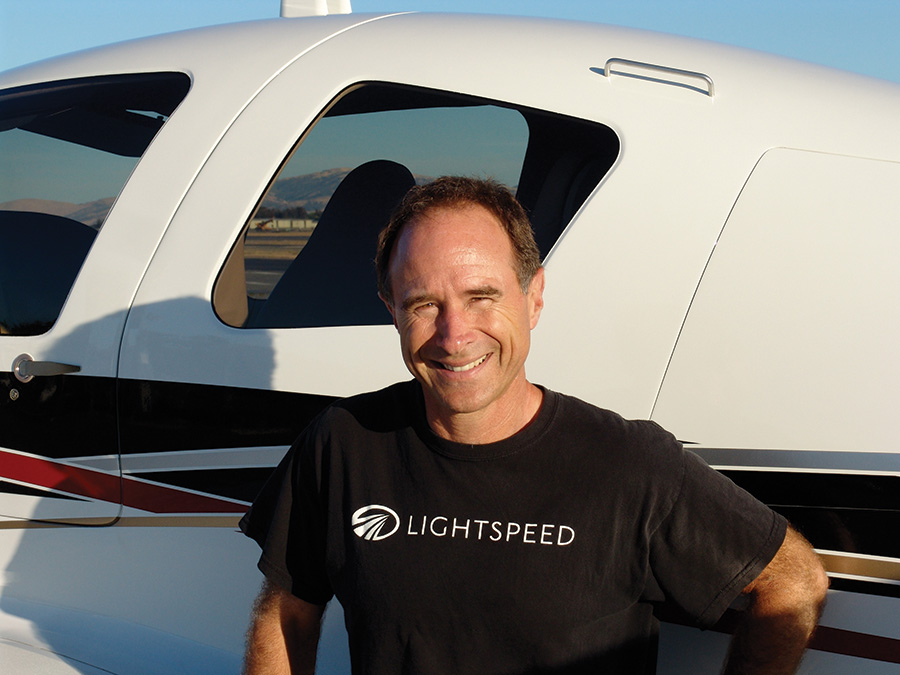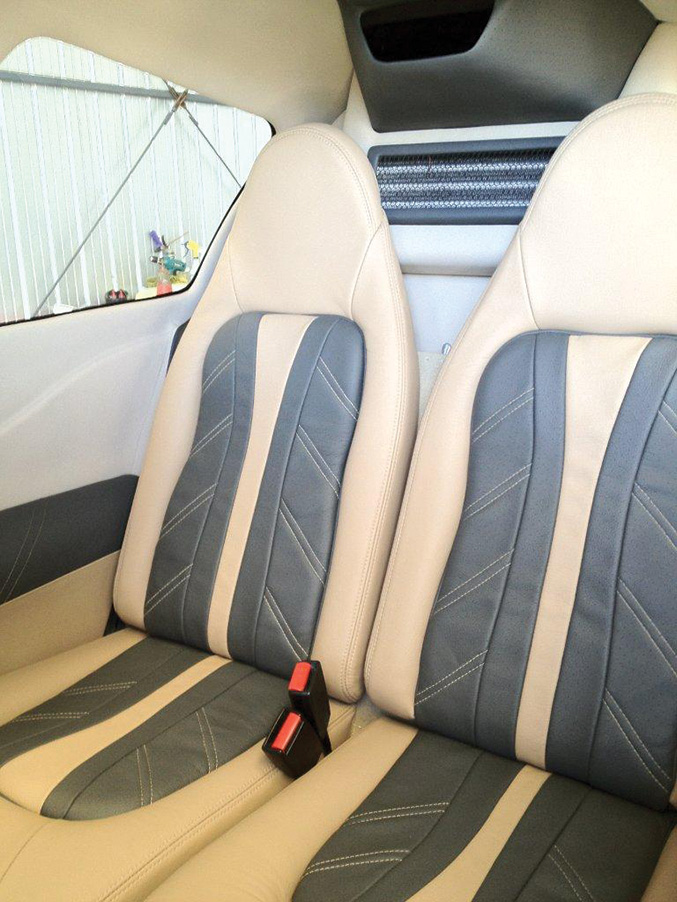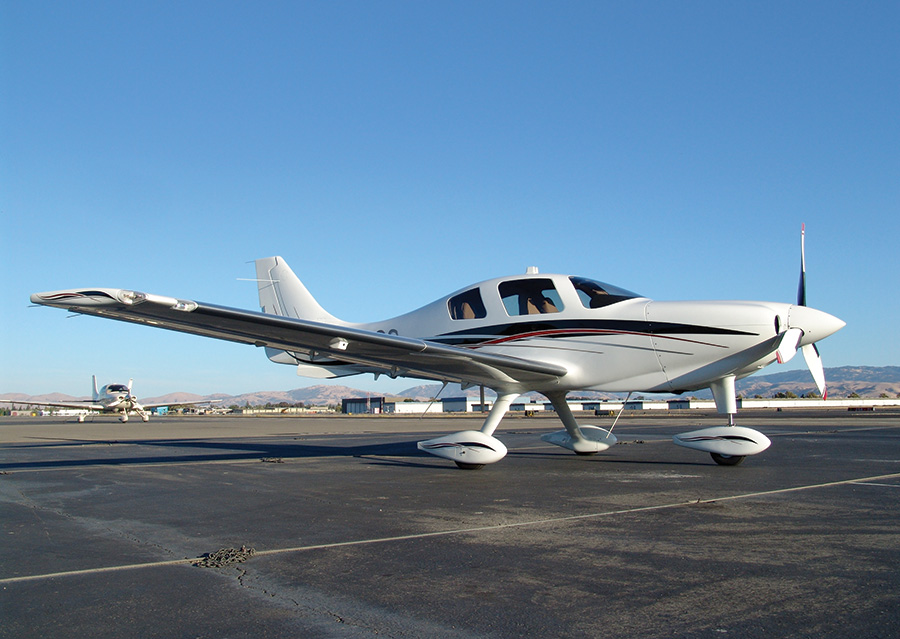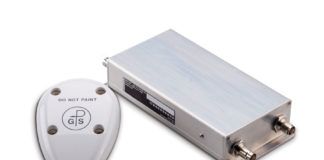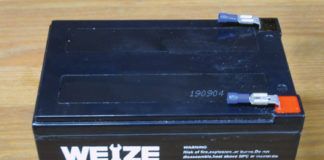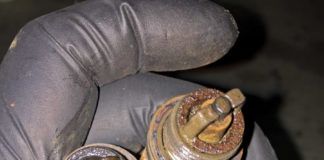Every now and then, a homebuilt shows up that is an outstanding expression of the design itself and the person who put it in the air. Meet first-time builder Pete Sinclair, a mechanical engineer and computer business consultant who just wasn’t satisfied with the latest in aviation technology. He took it a step further. Well, several steps further, actually.
Beginnings
“There were seven kids in our family,” Pete chuckles, “so we weren’t allowed to get driver’s licenses until we were 18 because of the cost of insurance. But there was no rule in the house against flying!”
A resourceful lad, 15-year-old Sinclair pedaled his Schwinn Stingray down to the San Carlos, California airport, along with his paper route money, and commenced to take flying lessons in a Cessna 150. “I got my private license at 16,” he recalls, “but I wasn’t allowed to drive until I was 18. My friends would drive me to the airport so I could take them flying, and then they’d have to drive me home.”
With a grand total of 68 hours logged between the 150 and a 172, it was now time for Sinclair to go to college. Flying became completely unaffordable, but once infected by the flying bug, the disease rarely goes away and stays gone. Fast-forward 25 years to 1998, and Sinclair started flying out of San Carlos again, having established his career in the rapidly-evolving world of high tech. But he wasn’t content.
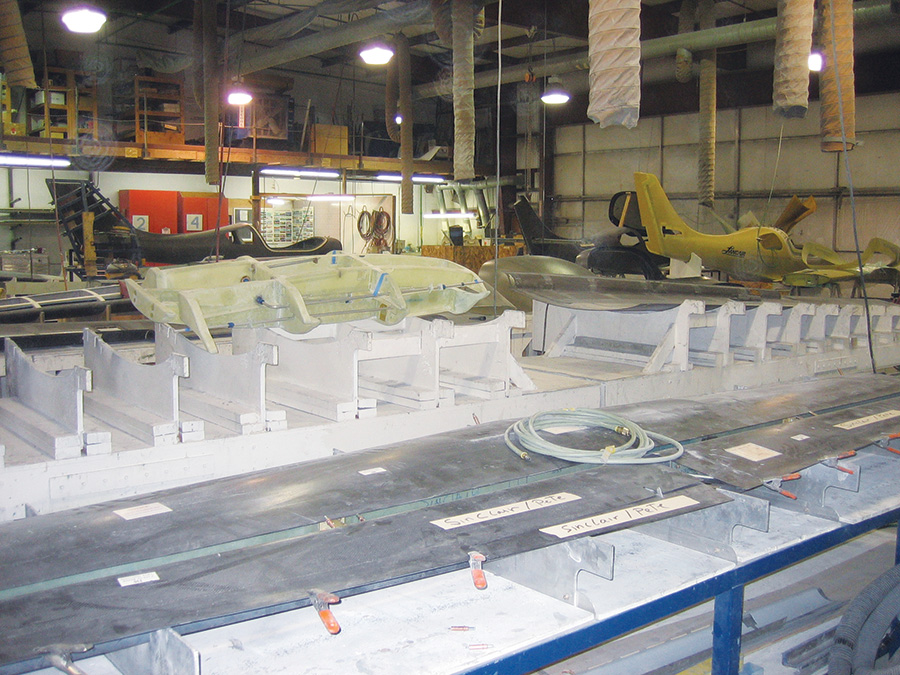
The first step in building a Lancair is to attend the mandatory factory training, where builders assemble flight-critical components under the supervision of Lancair personnel. Note the wing jig in the foreground.
Massively Mired
“I’m a technology guy,” Sinclair explains, “and I saw that the technology in airplanes was 40 or 50 years old. The situational awareness was terrible.” Indeed, the airspace in the San Francisco Bay Area rivals many other urban areas for complexity, with three major airports (San Francisco, Oakland and San Jose) in close proximity, covered by Class Bravo airspace. In addition, rapidly rising terrain in many areas makes it unusually complex.
“I didn’t feel safe; I felt there was a risk there,” Sinclair recalls. “I didn’t trust the old technology. So, what got me interested was the Cirrus—this was finally getting things into the 20th century. I thought the 200-horsepower SR-20 was underpowered for the West Coast, with all the mountains around here. Then the SR-22 came out in 1999 with 310 horses, and I thought that was great! But could I really justify spending 300 grand on one?”
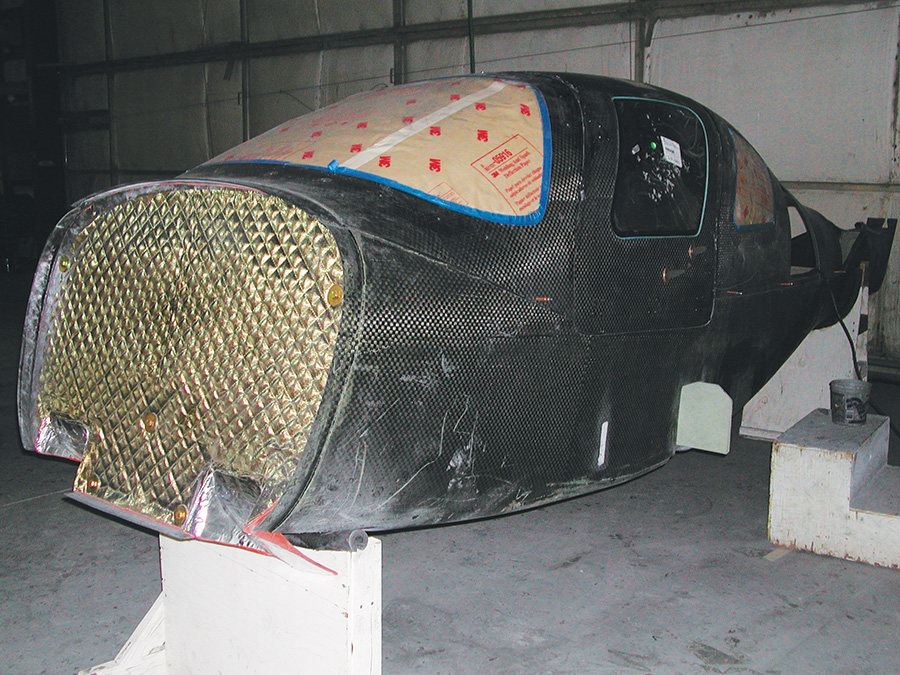
It’s crucial to mate the top and bottom fuselage halves precisely, not only to insure that all subsequent construction steps will align properly, but to allow for proper pressurization.
The Flying Fickle Finger of Financial Fate
To get the Cirrus that Sinclair wanted, he’d have to figure out how to come up with almost a third of a million dollars, which seemed insurmountable. “I used to consult with high-tech start ups,” Sinclair recalls. “And one of the guys who used to work for me asked me to consult when he started up his own. I would’ve done it for free, but he promised me two percent of the stock.” For the next two years, Sinclair gave his advice as the new company began and ultimately merged with another in 1995.
“So in mid-1999, I got this call from a shareholder’s agent, asking me where I wanted my shares sent to,” Sinclair says. “What shares?” After talking with the agent, Sinclair was very surprised that the stock he received for the consulting work he had performed five years earlier now had a value of $120,000. It still wasn’t enough, so he placed an order to sell if it ever reached a value of $300,000. “Everyone told me I was crazy,” Sinclair remembers, “but it actually hit that value just three days before the market crashed on January 17th, 2000. So I took the money and ordered the Cirrus.”
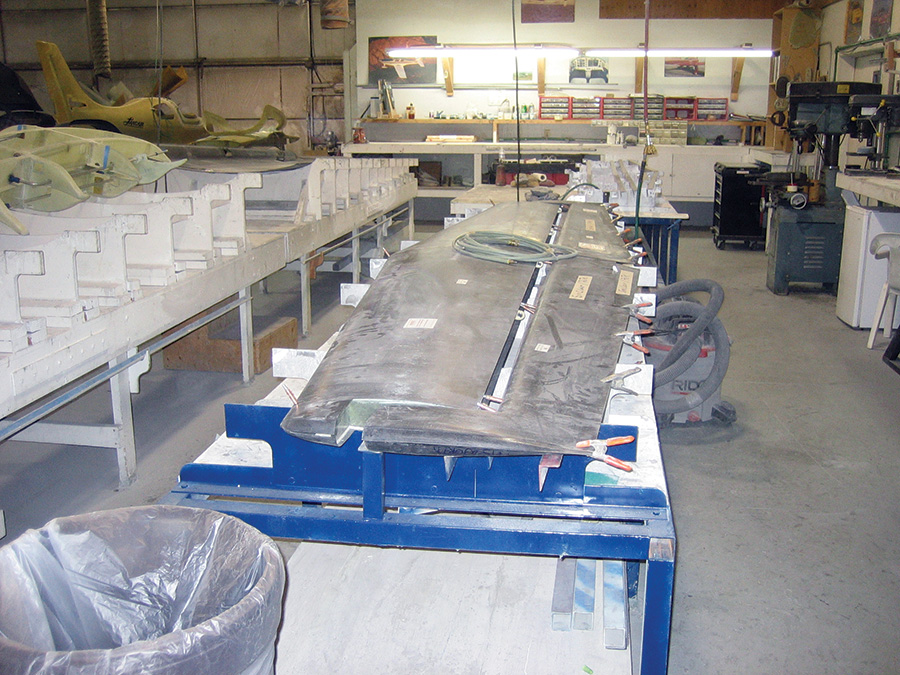
The horizontal stabilizers and elevators have been closed and cured, ready for removal and transport back to Pete Sinclair’s garage for final assembly.
FADEC Fast Forward
The last thing Sinclair wanted was a modern airplane sporting an old-fashioned mixture control, so he requested a Full Authority Digital Engine Control (FADEC) system to enhance the Teledyne Continental IO-550 powerplant. At that time, Cirrus and FADEC developer Aerosance were working on it, and Sinclair was told it was only a matter of months before delivery. As is frequently the case with the STC process, months turned into years. “Finally, Cirrus said FADEC just wasn’t going to happen anytime soon,” recalls Sinclair, “and I might as well take delivery of the airplane without it.”
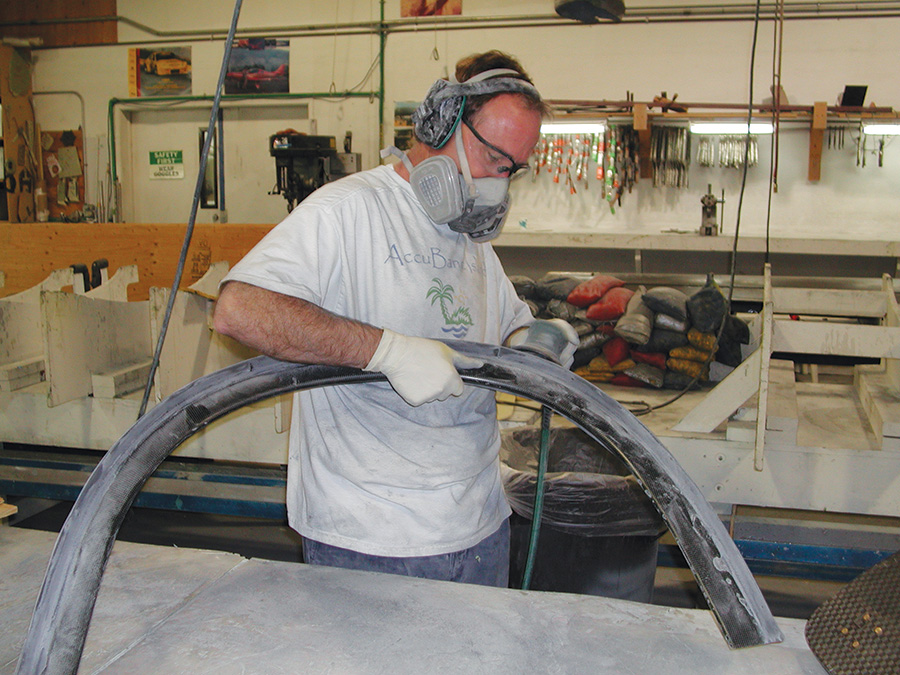
Pete Sinclair prepares part of the pressure bulkhead for installation. Doing these critical tasks in the Lancair factory shop gives the builder great insight into kit construction, from both a workmanship and procedural perspective.
Not easily discouraged, Sinclair rang up the president of Aerosance to get their side of the story. As it turned out, Aerosance couldn’t borrow a Cirrus for FADEC system testing, so the project had stalled. Sinclair offered up his brand-new SR-22 to Aerosance as a test bed in exchange for the FADEC installation, ultimately resulting in the creation of the IOF-550, with the “F” standing for FADEC .
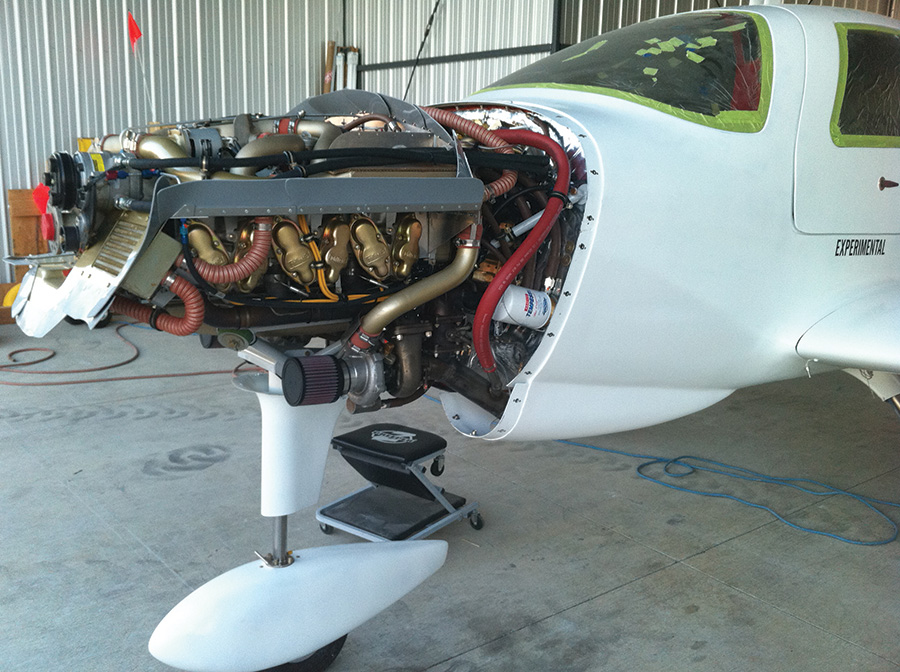
One of a kind; the only FADEC controlled TSIOF-550 currently flying. Pete Sinclair is quite proud of that fact, and could not bear to give up FADEC when stepping up from the Cirrus SR-22 to the Lancair ES-P.
Happy Ever After?
Not quite. “I start flying the Cirrus, and my son starts complaining that he gets headaches whenever we fly over 10,000 feet, even with supplemental oxygen,” Sinclair recalls. “He’s got an altitude sensitivity. I’m thinking that pressurization would be really nice, but I find that there’s nothing reasonably priced that has pressurization.”
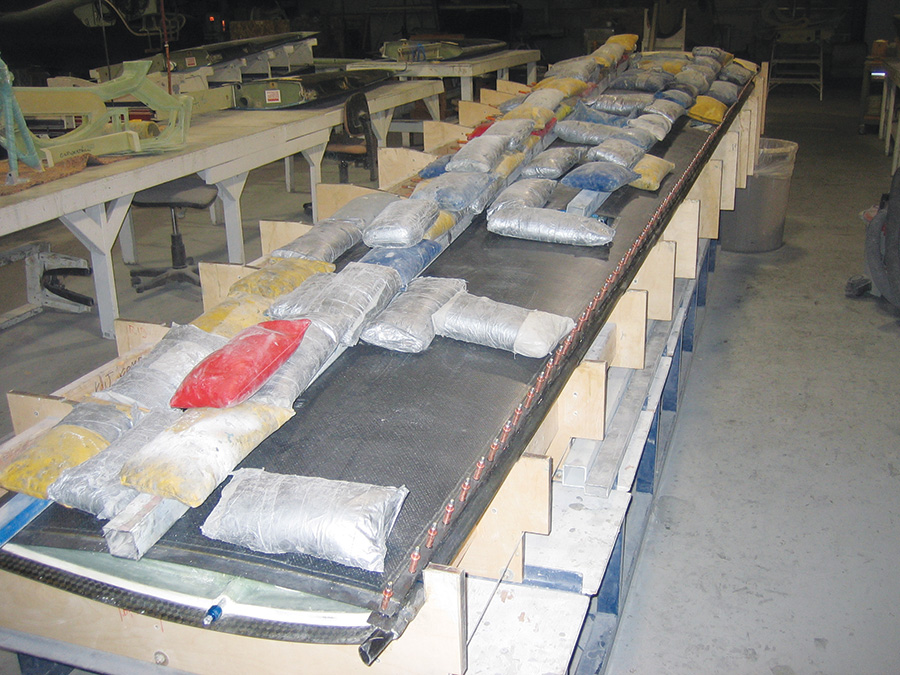
Pete Sinclair’s right wing is now fully closed, with help from a small beach filled with sandbags and Clecoes galore. The factory jig makes sure that no twists or deformations will exist, which would greatly affect flight characteristics.
“So I start looking around,” Sinclair continues, “and I find that Lancair has something called an ES-P, which is essentially a pressurized Cirrus. It’s got fixed gear like the Cirrus, the same wing loading, the same wingspan, a slightly narrower cockpit, and a little more airspeed. And it’s got pressurization! But I didn’t want to give up FADEC.”
Designed for the twin turbo Continental TSIO-550, the ES-P uses the bleed air from the turbo for cabin pressurization. The only problem was that a FADEC-controlled version didn’t exist. But by this time, Sinclair and the guys at Continental had gotten to know each other pretty well during the Cirrus FADEC experience, and he gave them a call. Their response sounded very familiar. “Oh yes, we’re working on a FADEC version of that engine,” Sinclair chuckles, “but I had heard all this before.” Sinclair described his plans for what would be a TSIOF-550, and Continental agreed that the Lancair would be an excellent use for the very first one.
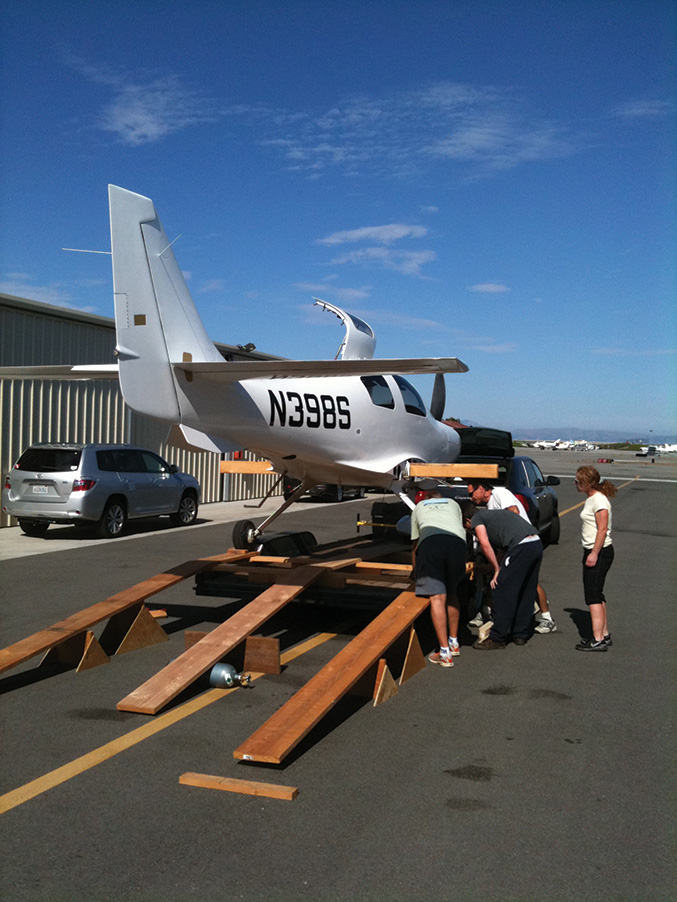
Where there’s a will, there’s a way. San Carlos Airport does not allow experimental flight testing, so the Lancair was trailered to a more accommodating location: Tracy Airport in the rural California Central Valley.
And So It Begins
“I’m a mechanical engineer by training, but I’m more of a computer guy. I got the degree in mechanical so I could understand systems and materials, but I’d never built an airplane before,” says Sinclair. He attended the mandatory two-week Lancair builder training, where he took delivery of the kit. Under factory supervision, builders close wings and mate the fuselage halves, making sure everything is all plumb as designed. Then the project was trucked to Sinclair’s three-car garage, where it took shape over the next three and a half years.
“I had no professional assistance,” Sinclair recalls, “but the Internet was a great resource. You could ask a question in the forums, and have 10 answers within an hour. The bad news was that the answers were all different!” Sinclair read them all, applied his own understanding of how things should be, and ultimately came up with workable solutions to each problem he encountered.
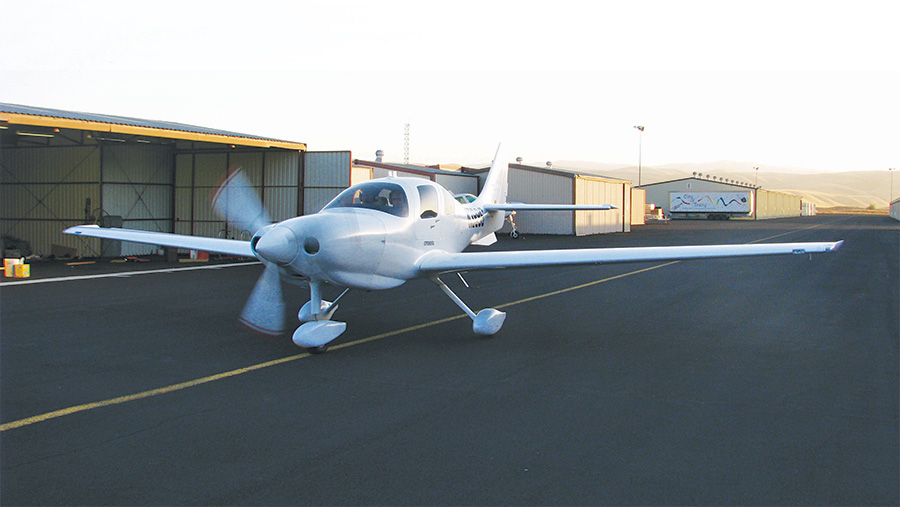
After being pronounced good by test pilot Dave Morss, Pete Sinclair had the task of flying off the first 40 hours in the local area. Here he prepares to launch from Tracy during a perfect October evening.
Engine, Engine, Who’s got an Engine?
“I was about halfway through kit construction, and I called Continental to buy the engine,” Sinclair says. “And they had changed their minds. They said it wasn’t going to be available.” That might be enough to discourage a lot of builders, but Sinclair shifted mental gears and considered his options. He accepted that FADEC just might not be in the future for his Lancair and began looking for a deal on a TSIO-550.
Sinclair found 25 of them, brand new in crates, in an engine shop in Colorado. These engines had just been purchased from Adam Aircraft, which had recently ceased aircraft manufacturing operations. Originally intended for the Adam 500, Sinclair was able to acquire one of these surplus engines for about half the new list price. “I get the engine, everything’s fine, but I’m a little disappointed about giving up FADEC,” Sinclair recalls.

The centerpiece of the author’s panel is a Garmin G900 system and the Vertical Power electrical system, which eliminates electromechanical circuit breakers.
AirVenture to the Rescue
The annual EAA convention in Oshkosh, Wisconsin, is a must-attend event for everybody who’s anybody in aviation. And, if you happen to miss a year, your competition loves to speculate why. Did you go out of business? Are you deathly ill? Perhaps you’re already dead. Business wise, it’s essential to attend. Even if you’re a major aviation engine manufacturer who’s now in the sights of Pete Sinclair.
“I went to Oshkosh and cornered the CEO of Teledyne Continental,” Sinclair recalls, “I told him the story about how you told me you would supply this engine, and I even designed my panel around it. I was the first guy with the STC on the Cirrus, and that took almost four years after being promised four months. I wasn’t whining, but I was giving him all the data.”
The factory finally relented, and Sinclair sent his still crated engine to them for FADEC installation. Today, Sinclair’s ES-P is the only one flying with FADEC, and he’s quite proud of the fact. “And because it’s experimental, I could get it before the final type certificate,” Sinclair says.
You Can’t Always Get What You Want?
Now that Sinclair had his ideal engine, you might think he’d be satisfied. But Sinclair prefers that things be just so. “I didn’t really like anyone’s panel,” Sinclair explains, “so I decided to build my own from scratch around the Garmin G900 and the Vertical Power electrical system because I didn’t want mechanical circuit breakers.”
Conversant with AutoCAD 2D, Sinclair proceeded to lay out a design that he could forward to his brother, skilled in AutoCAD 3D. The goal was a design that would tilt the gauges and displays directly toward the pilot’s point of view. The plan was to score the single sheet of aluminum in the back, allowing the various bends needed to achieve this goal.
But the devil is always in the details, such as discovering that adjustments needed to be made to allow for the extra depth required by the cages on back of the G900 units, and that the internal gyros in his Sorcerer autopilot only allowed for 10 degrees of tilt. Sinclair had built in 12.5. “I was thinking about building a mounting bracket that would reduce the tilt to 9.5, but then I called the company and found out they could tilt the gyros internally…for another $500,” Sinclair recalls. He also had to move the panel location several times, due to interference with the top half of the fuselage. Overall, it took six different panels before building one that fit properly and met all of Sinclair’s requirements.
Bells and Whistles
Sinclair’s ES-P is obviously very well thought out, and many of his enhancements are safety related, such as the air bag seat belts and the RDD thermal de-ice system. One item that wasn’t available on the pressurized ES-P that he had on the Cirrus was an emergency ballistic parachute. So Sinclair gave it some thought and came up with a solution that would minimize the risk of a forced landing at night.
“It has TCAS, satellite weather and air conditioning,” Sinclair explains, “and also a FLIR camera, which will light up the runways and roads because they’re warmer and glow in the display at night. I looked on the market and the only FLIR system I saw was $15,000. It turns out you can buy just the camera for $2,500—you just have to build your own enclosure for it.”
Which is exactly what Sinclair did, using a wing access panel as the ideal spot to mount it under the right wing. One more obstacle remained: The G900X didn’t have a video input like the G1000 systems do. “I kept bugging them (Garmin),” Sinclair recalls, “and I had to send my G900X in for an update anyway.” The video input was added, and now Sinclair’s multi-function display (MFD) has the ability to call up a small window showing what terrain features are in front, even in complete darkness.
Creature Comforts
The original plan for the interior included taking the plane to Texas, where a local shop would have their resident artiste create just the right leather interior. When the estimated completion time stretched from three to nine months, Sinclair had an epiphany. “Hell, if I can build an airplane, I should be able to do an interior,” he said. Only the front seats were sent down to Texas, and Sinclair completed the rest in six months.
Sinclair found a local auto upholstery shop owner who was willing to give advice and loan tools, and he also found a friend with an industrial sewing machine. It’s often said that building a plane is an education in itself, and the results of Sinclair’s on-the-job training is simply superb. Even the headliner is a work of art, with a precision fit that negates any need for visible fasteners. Best of all, it has that new luxury-car smell that makes you want to climb in and stay there.
Flight Test
By November 2009, it was finally time to fly, and the Lancair was moved out to the less-congested Tracy Airport. Test pilot Dave Morss was hired for the job; he flew it for 45 minutes and returned with only three comments. The first two suggestions were to add weight to the tail to compensate for the forward CG from the engine’s twin turbochargers and that the side control stick was too tight in roll. His last comment was more of an opinion: “Nice plane. Too many gadgets.”
After Morss pronounced the Lancair safe to fly, Sinclair soon flew off the required 40 hours in the vicinity of Tracy Airport. “There wasn’t a lot to do on the plane,” recalls Sinclair. “Morss didn’t find much to correct.”
Final Finishing
It’s hard to believe that this ES-P’s beautiful finish was from the effort of a first-time builder. Sinclair took his time, asking questions of other builders first, then spending an entire summer sanding, filling, and doing body work. “I used the black primer from Loehle,” Sinclair explains, “where it goes on shiny black, but becomes a lighter gray when sanded. It’s really easy to see the low spots.”
For paint, Sinclair flew his Lancair to Salinas Airport where T&P Aero Refinishers applied both the base coats and the accent stripes. “The stripes were designed by Air Graphics in Arizona, who then sent masks to the paint shop,” Sinclair says. “It was a lot less expensive than decals, and kept the total paint cost down around $10,000.”
Real World Efficiency
Beautiful as it is, Sinclair’s Lancair is no hangar queen, flying roughly 150 hours per year. Where performance is concerned, Sinclair has found it to be a real step up from the Cirrus. The turbos allow Sinclair to fly almost 10,000 feet higher than the Cirrus, where he tends to cruise between 20,000 and 25,000 feet. “I average around 200 knots true while burning 15 gallons per hour,” Sinclair explains. “If I go VFR down low around 17,000, I see 180 to 185 at the same fuel burn. Going up to 26,000, I’ll see 210 knots at 13 gallons per hour. But it takes 36 gallons per hour to get up there!”
The FADEC system removes most power-management duties, greatly simplifying the cockpit workload by only offering two modes: best power and economy. “I fly in the economy mode all the time,” says Sinclair, “since it automatically goes into best power during takeoff and full-power climb.” When in economy cruise, the FADEC system goes into lean-of-peak mode, allowing for very high fuel efficiencies, while only sacrificing a small percentage of power. “Most pilots want to go as fast as possible,” says Sinclair, “but I really love flying this plane; I don’t mind staying up a bit longer.”
The Perfect Airplane?
For Pete Sinclair, it is. Even to the casual observer, this Lancair ES-P shows a level of craftsmanship and planning highly unusual for most homebuilts, especially considering it was his first project and only took three and a half years from start to finish, without any professional assistance.
When asked about how the Lancair compares to the Cirrus, Sinclair considers it a step up in all areas but one. “The Cirrus has a larger, more comfortable cabin, and fits bigger people much better,” he says. “But it’s kind of like an SUV compared to a sports car. Sure, the sports car is smaller, but it’s a lot more fun! I’m only five feet eight and 165 pounds, so I don’t miss the Cirrus at all.”
When people ask him about the total number of hours involved in the Lancair’s creation, Sinclair becomes a little less precise. “I tell them I have no idea,” he says with a sly smile, “because for me, it’s an ongoing hobby.”



